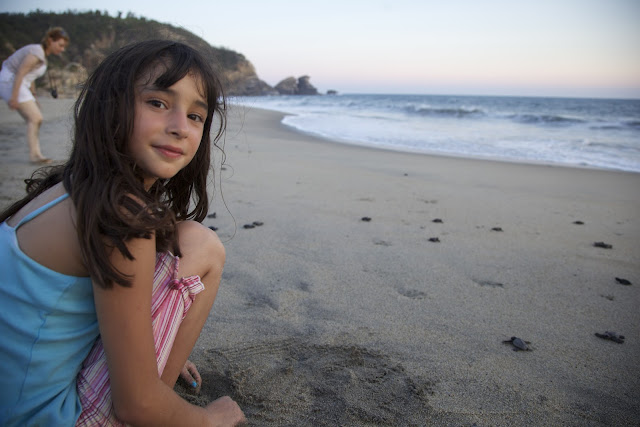Somebody may have already made this observation at some point in the past, but I'm here to tell you that Mexicans like to party. From what I've been told, this is a Latin-America wide phenomenon, but Mexican parties are the only Latin American parties I have personal experience with. It doesn't really matter if the party in question is a birthday party, a baptism, a wedding, or a Christmas party, they all follow the same general format. Parties with a religious or ritual theme are more likely to be preceded by a Mass, that's all.
With the single exception of a bachelorette party I once attended, all parties are all-ages. Children are welcomed and included no matter the hour... nobody ever puts a Mexican child to bed. Not that I've ever seen. Babies fall asleep in arms and toddlers fall asleep on laps and school age children occasionally fall asleep on the floor and are carried out to the car. More often, they don't fall asleep and are running around like hyperactive wind-up toys, jacked on candy and Coca-Cola, until midnight.
Because all Mexican parties last until AT LEAST midnight. Even if they start at 11 a.m. The guests will be arriving in staggered waves over the course of several hours, and the hosts just keep clearing and resetting the table. Sometimes the food or the booze runs out but not usually because every guest will bring something, either to eat or to drink. A bakery cake; a case of Corona; a raft of multicolored jello parfaits in disposable cups. Non-edible gifts are also given (it's very poor form to be invited to a party and to show up without a gift, be it ever so humble), as are guitars and other musical instruments.
 |
| A little guitar music in the wee hours |
At least at our house, cleaning up is left for the next day. If I start to bustle around picking up empties and wiping down surfaces, my mother-in-law or sister-in-law will come over and literally grab me by the arm back to the party. "We'll do that tomorrow," they say. And as the night wears on, the combination of fatigue and tequila really does make it advisable to avoid carrying armloads of glassware around. It's a tradeoff - liberating in the moment to remain completely oblivious of the mess, but an extra big drag the next morning, to face with a hangover a house that looks like it was sacked by Huns.
The week leading up to Christmas is a big party week everywhere, but it was especially big at our house because of our anniversary. For a while, Homero and I thought we would be getting married on our anniversary, the 22nd. Yes, we are already married, but we don't have a Mexican marriage license and as I try to get my Mexican citizenship, it would be good to have one. For complicated bureaucratic reasons that will be the subject of a later post, we didn't get Mexican-married and won't be. However, I'd already ordered three full-sides of pork ribs for the giant American style barbecue party I intended to throw. So we called it an anniversary party and went on with the show. Barbecue is easier to pull off here than traditional Thanksgiving dinner, that's for sure. It was a hit, although everyone called the barbecue sauce "mole."
That was Saturday. The next day, the family came back over for the "recalentada," or the leftovers. We ended up spending the whole day sitting around the table picking at ribs and finishing up the beers. No serious cleaning happened at all. Towards dark, I gathered up all the empties and scraped the plates and stacked them in the sink, but I had no energy for more. That was Sunday. The next day, Monday, was of course Christmas Eve (Noche Buena). Abuelita Adelina, Homero's grandmother, hosted that party, as she usually does. More family, more presents, more roast chicken, potato salad, tres leches cake, and more beer. Fireworks, dogs going crazy, church bells ringing. Another late night.
 |
| One of many pinatas |
 |
| The girls seem a bit perplexed by the chemistry set |
"I'll be down in fifteen minutes," I told her.
Five minutes later, up comes Homero. "People are asking about you! Why aren't you downstairs?"
I was a little snappy, I'm afraid. "Because I'm ready for a freaking break!" I think is what I answered. Now, I have a break, for a few days. On the thirty-first, we are heading out into the mountains for a two-day New Year's party in the ancestral pueblo. I'm sure it'll be a blast.














































